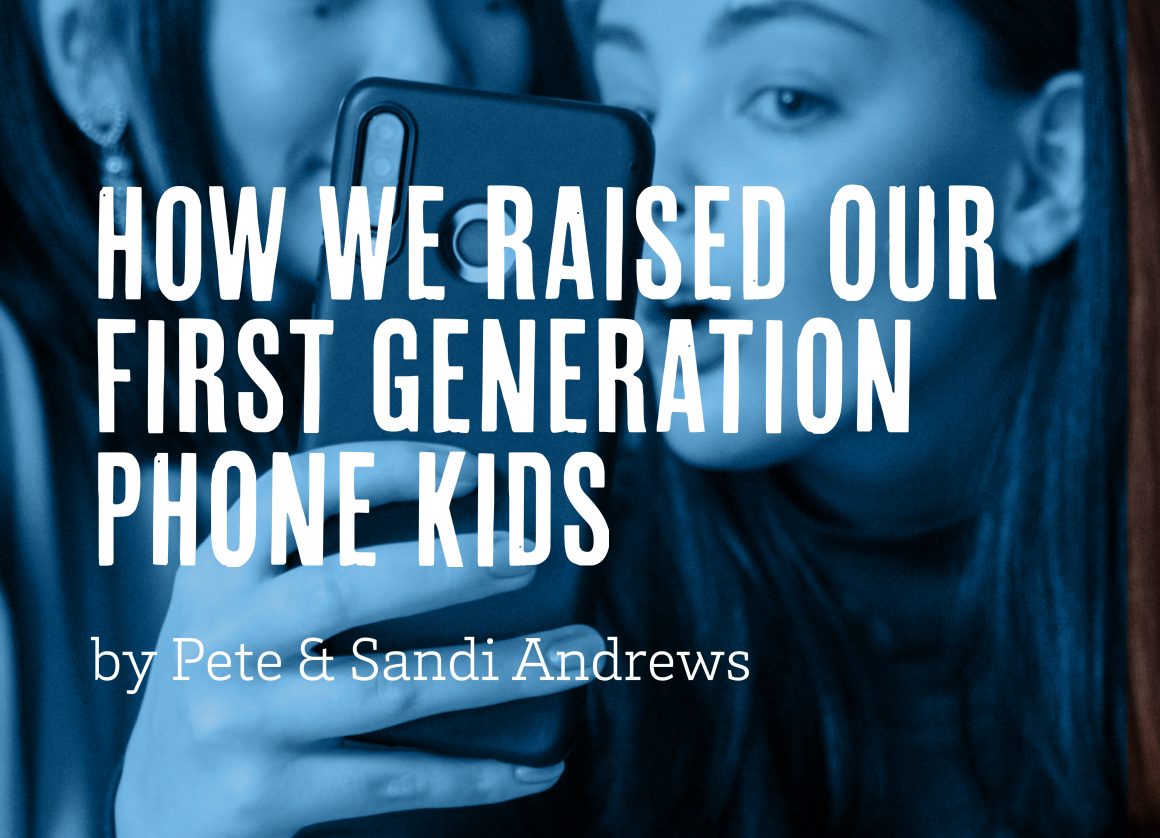Pete and I consider our kids (Sammy, 22 and Tacy, 21) to be right on the cusp (or just ahead of ) the fully-connected “phone kid”. That meant that their earliest involvement with technology would have been the occasional TV or video game. It wasn’t until they were in middle-school or even high school that their phones were anything like what kids are experiencing today. Because of this, we didn’t really have an intentional plan for their exposure to technology.
Our approach was simple, but firm with how our family would use TV/computers/phones/video games; etc and we stuck to these rules.
For TV/Video Games/Computers, the rule was simple. We had ONE TV in one room of the house. THAT WAS IT. No other TVs (or video games, or computers) were allowed anywhere else, especially in anyone’s bedrooms! This meant that we had shared media experiences as opposed to isolated, individual ones. Something we started when the kids were really young was Pizza and Family Movie Night. Every Friday night we would order pizza and watch a movie all together. This little tradition continued literally until the kids went off to college. It was great fun to see each week what movie the kids would pick to watch, although Sandi suffered through a lot of viewings of Labyrinth. The real joy of doing this was a sense of family unity in watching films and then discussing them. We had many great nights talking about what things meant in the films, and what we could learn from the characters or stories.
For phone usage, our rules were also pretty simple, but we were firm about them as well. The kids were older and the phones had gotten more involved and demanded more time and attention from the user! At the end of the day, phones had to be left charging in the kitchen. No phones went up to the bedrooms overnight. When it was meal time and we were all eating together, at home or out at a restaurant, no phones were ever allowed at the table. These rules were in place until the kids graduated from high school. Any social media the kids were involved in (i.e. Instagram) we followed and kept track of. It was also understood that their phones could be checked anytime mom and dad wanted.
We certainly didn’t do everything right, but we really tried to rely heavily on the good experiences we had with our parents and trusted God to guide us in raising the kids.
________
Pete & Sandi Andrews are some of the founding members of what was once The ORB (Outreach Red Bank), the ministry that is now Park Church. They are members of the Middletown Community Group. Sandi is an elder and teaches and hosts in Park Kids. Pete was the leader of the New Ancients Worship band and now helps out in the sound booth.
________
PS- If you’re wondering what the Andrews kids think about the boundaries their parents set, when asked if his parents’ rules were relevant and helpful, Sammy responded “Absolutely!” without missing a beat. And Tacy said “I definitely feel like the rules they put into place allowed for us to stay close and build good relationships with us as a family.”
The Andrews family decided what their boundaries were with their tech to maintain spaces for their family to be together. What are some boundaries that would be helpful for you to set for yourself and your family? What places and spaces would best foster relationship by being device-free zones? The dinner table? The bedroom? The car? Where are places you’d like to have better conversation and attention with your loved ones and less distraction?
The Andrews family also made a point of using tech together as a part of fostering relationships as a family and creating discussion opportunities. What rhythms could you introduce into your life and your family rhythms for togetherness with tech? What would something like family movie nights where everyone is watching one screen together (and not on all their own devices at the same time) look like? What if you all truly focused all your attention on one screen together? What if phones and other devices weren’t invited to family movie night — just the family?
The Andrews family also made a point of designing their physical spaces to reflect their values. They reduced the distractions and things that physically divided them and reduced excess TVs so they could have one to share as a family and make the TV a gathering point instead of a dividing point. Is there any way you can adjust the physical spaces of your home to foster an environment of shared experiences instead of “isolated, individual ones”?


